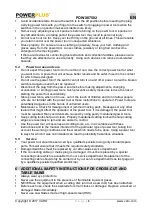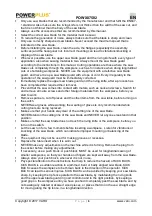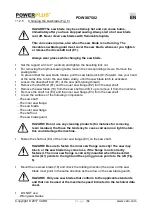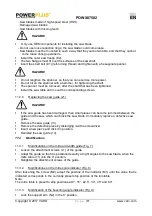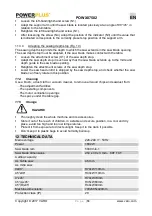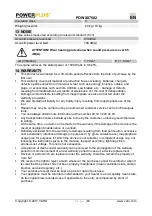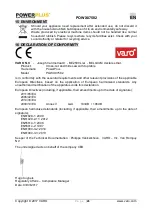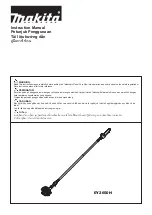
POWX07582
EN
Copyright © 2017 VARO
P a g e
|
17
www.varo.com
Saw blades made of high-speed steel (HSS)
Damaged saw blades
Saw blades with missing teeth
HAZARD!
Only use OEM components for installing the saw blade.
Do not use loose reduction rings; the saw blade could come loose.
Saw blades must be mounted in such a way that they cannot wobble, and that they cannot
come loose during operations.
Install the outer saw flange (E2).
The two flanges must fit over the surfaces of the saw shaft.
Insert the shaft bolt (E1) (left-turning thread) and tighten with a hexagonal spanner.
HAZARD!
Do not lengthen the spanner, so that you can exercise more power.
Do not hit on the spanner with a hammer, for tightening the shaft.
The spanner must be removed, after the shaft that has been tightened.
Install the saw table and mount the corresponding screws.
11.2.6
Replacing the saw guide (21)
HAZARD!
If the saw guide has been damaged, then small pieces can become jammed between the
guide and the saw, which can block the saw blade. Immediately replace a defective saw
guide..
Remove the saw guide (13).
Remove the defective piece by dislodging it with a screwdriver.
Insert a new piece and click it in position.
Reinstall the saw guide (13).
11.3
Modifications
11.3.1
Modifications on the mitre and width guide (Fig. 7)
Loosen the attachment screws (L1) of the guide.
Adapt the guide so that it is positioned exactly at right angles to the saw blade, when the
mitre table (11) is in the 0° position.
Retighten the attachment screws of the guide.
11.3.2
Modifications on the mitre scale indicator (Fig. 8)
After loosening the screw (M2), adapt the position of the indicator (M1) until the value that is
indicated corresponds to the currently preset stop position of the turntable.
Note:
The mitre table is preset to stop positions at 0°, 15°, 22.5°, 30°, 45° and 60°.
11.3.3
Modification of the bevelling angle indicator (Fig. 9)
Lock the support arm (N2) in the 0° position.



